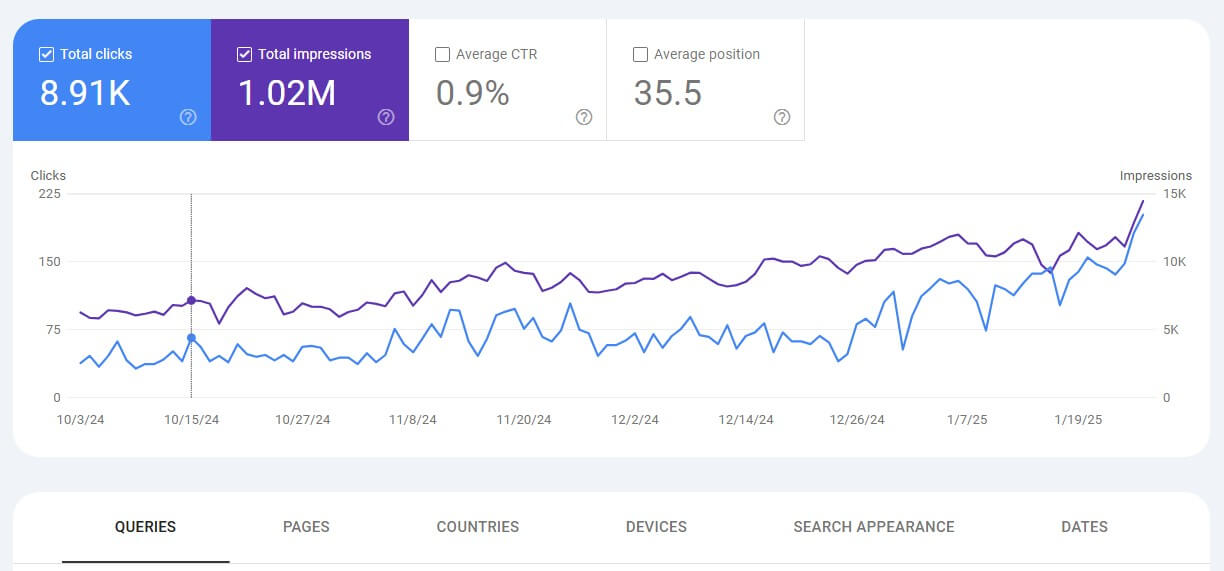Are your SEO efforts a guessing game? I’ve seen it countless times: businesses celebrate traffic increases but struggle to connect those numbers to actual revenue. This guide changes that. It’s not about vanity metrics; it’s about understanding the right signals – the ones that drive business growth.
In this guide, I’ll walk you through the essential SEO KPIs: organic traffic, keyword rankings, backlinks, user engagement, and, crucially, conversions. These are the metrics I focus on when working with clients, and they’re the ones that truly move the needle.
You’ll learn how to track them effectively using tools like Google Analytics and Search Console. More importantly, you’ll discover how I analyze the data, turning raw numbers into actionable insights. I’ll share my strategies for identifying what’s working, and what’s not, and how to optimize your SEO for maximum impact.
Stop guessing. Start growing. This guide gives you the roadmap to data-driven SEO success.

The SEO metrics you should focus on (and why they matter)
Not all SEO metrics are worth obsessing over. Some just offer surface-level insights, while others help you understand your performance, spot issues, and refine your strategy. Here’s what you should focus on:
Organic traffic (your visibility and reach in search results)
Organic traffic refers to visitors who land on your site via unpaid search results on Google, Bing, or other search engines. It’s one of the most important indicators of SEO success.
- Why it matters: A steady increase in organic traffic shows that your website is gaining visibility and attracting users looking for your content, products, or services.
- How to track it: Google Analytics (GA4) → Reports → Acquisition → Traffic Acquisition → Organic Search.
- What to do if it drops: First, check Google Search Console for manual penalties or indexing issues. Next, investigate algorithm updates, technical errors, or declining keyword rankings.
Traffic alone isn’t enough. You need to assess where it’s coming from, whether it’s relevant, and how it translates into business impact. Traffic from highly targeted keywords is far more valuable than generic visits that don’t lead to engagement.
Learn more about what impacts organic traffic the most and how to keep it growing.
Keyword rankings (tracking your search visibility)
Keyword rankings tell you where your web pages appear in search engine results pages (SERPs) for specific queries. If your pages rank well, users are more likely to click through to your site.
- Why it matters: Ranking on page one is essential—studies show that the first five results capture nearly 70% of all clicks.
- How to track it: Google Search Console, Ahrefs, SEMrush, or Rank Tracking tools.
- Actionable tip: If your rankings drop, check competitor content, search intent changes, or technical issues. Updating content, adding fresh internal links, and improving page speed can help you recover.
Tracking keyword trends over time, rather than fixating on daily fluctuations, provides a clearer picture. Search rankings are dynamic, and algorithm changes, user behaviour shifts, and seasonality all play a role. A single drop isn’t a crisis, but consistent declines signal a need for optimisation.
Check out how to interpret and analyse SEO data for reporting.
Backlinks (building website authority and credibility)
Backlinks are links from other websites pointing to yours, and they play a huge role in Google’s ranking algorithm. Quality backlinks act as endorsements, boosting your domain’s authority and improving rankings.
- Why it matters: Sites with strong, relevant backlinks tend to rank higher. Google sees them as signals of trust and credibility.
- How to track it: Ahrefs → Site Explorer → Backlinks, Google Search Console → Links.
- How to improve: Prioritise quality over quantity. Focus on earning links naturally through guest posts, data-driven content, digital PR, and outreach.
Not all backlinks are equal. Links from high-authority, industry-related sites carry far more weight than random, low-quality ones. Monitoring your backlink profile regularly can help you identify toxic links that might be dragging your rankings down.
Explore content writing ideas that can turn blogs into business tools to improve your site’s linkability.
Page speed & core web vitals (ensuring fast and smooth experiences)
Page speed isn’t just a user experience factor—it’s a direct Google ranking signal. If your website loads too slowly, users will leave before the page even loads.
- Why it matters: Google prioritises fast-loading, stable, and interactive pages through Core Web Vitals metrics.
- How to track it: Google PageSpeed Insights, Lighthouse, or GTmetrix.
- Quick fix: Compress images, enable caching, minify code, and use a content delivery network (CDN).
Speed issues often come from bloated themes, excessive plugins, or poorly optimised scripts. Optimising for mobile performance is especially critical, as mobile users expect near-instant load times.
Stay ahead by understanding how Google’s November 2024 core algorithm update impacted rankings.
Bounce rate & user engagement (keeping visitors on your site)
The bounce rate measures how many visitors leave your site without interacting. A high bounce rate usually signals a mismatch between user expectations and your content.
- Why it matters: If users leave quickly, Google assumes your page isn’t useful or relevant for the search query.
- How to track it: Google Analytics 4 → Engagement Metrics.
- How to fix high bounce rates: Improve content readability, site speed, and internal linking.
Look beyond the bounce rate alone. Engagement metrics like session duration, pages per visit, and scroll depth provide a more complete view of how users interact with your content.
Learn how to make a headline more compelling to improve page engagement.
Conversion rate from SEO (turning traffic into results)
SEO isn’t just about rankings and clicks—it’s about converting visitors into leads, customers, or subscribers.
- Why it matters: If your organic traffic is high, but conversions are low, your pages aren’t compelling visitors to take action.
- How to track it: Google Analytics → Conversions → Goals & E-commerce.
- How to improve: Add clear CTAs (calls to action), ensure landing pages match search intent, and streamline the user journey.
Tracking conversion rates by traffic source helps pinpoint which keywords and landing pages are driving real business impact. SEO and CRO (conversion rate optimisation) go hand in hand. To maximise your results, see how SEO and CRO work together for business success.

Content performance (knowing which pages bring results)
Not all content performs equally. Some pages attract visitors consistently, while others fail to gain traction.
- Why it matters: Tracking content performance helps you prioritise updates and optimise underperforming pages.
- How to track it: Google Analytics → Landing Pages, Ahrefs → Top Pages.
- How to improve: Refresh old articles, add multimedia, and expand sections based on searcher intent.
Regularly updating content is essential. Even high-performing pages eventually lose relevance if left untouched for too long.
Content that ranks well in organic search is far more valuable than relying solely on paid traffic. If you’re comparing both approaches, this guide on paid vs. organic traffic will help you decide which is best for your business.
Mobile usability (because mobile users dominate search)
With Google’s mobile-first indexing, websites must be fully optimised for mobile users.
- Why it matters: Over 60% of searches happen on mobile, and Google prioritises mobile-friendly pages.
- How to track it: Google Search Console → Mobile Usability Report.
- Quick fix: Use responsive design, avoid intrusive pop-ups, and test your site on different screen sizes.
A poorly optimised mobile experience can ruin even the best SEO efforts. Mobile SEO isn’t just about screen size—it’s about touch-friendly navigation, fast load times, and clear, easy-to-read content.
Brand perception is also heavily shaped by how accessible and well-structured your website is. Discover how SEO shapes brand visibility and why user experience plays a major role in rankings.
Final thoughts: SEO success comes from smart tracking and action
I gave you in this guide the essentials of SEO: organic traffic, keyword rankings, backlinks, user engagement, and conversions. These aren’t just numbers; they’re signals telling you what’s working and what’s not. Track them regularly, analyze the trends, and see where you can improve.
Is your traffic converting? If not, why? What can you change? Are your rankings slipping? Time to refresh that content or build some quality backlinks.
Don’t just collect data – use it. Make smart decisions. SEO is a long game, but the payoff is huge: more visibility, more leads, and more customers. That’s the real goal. So, start tracking, start analyzing, and start growing.